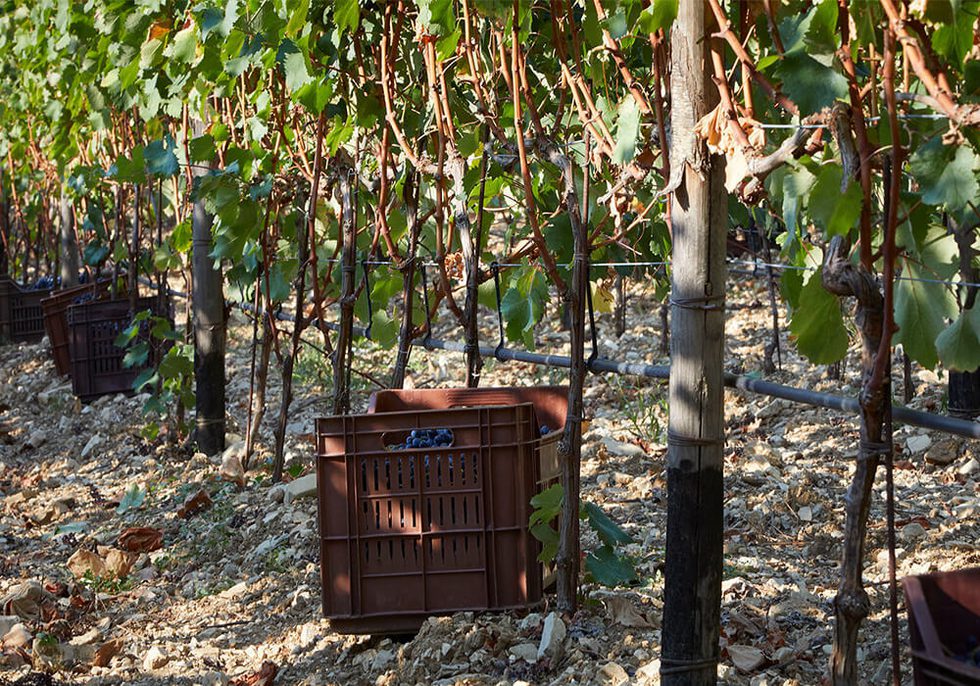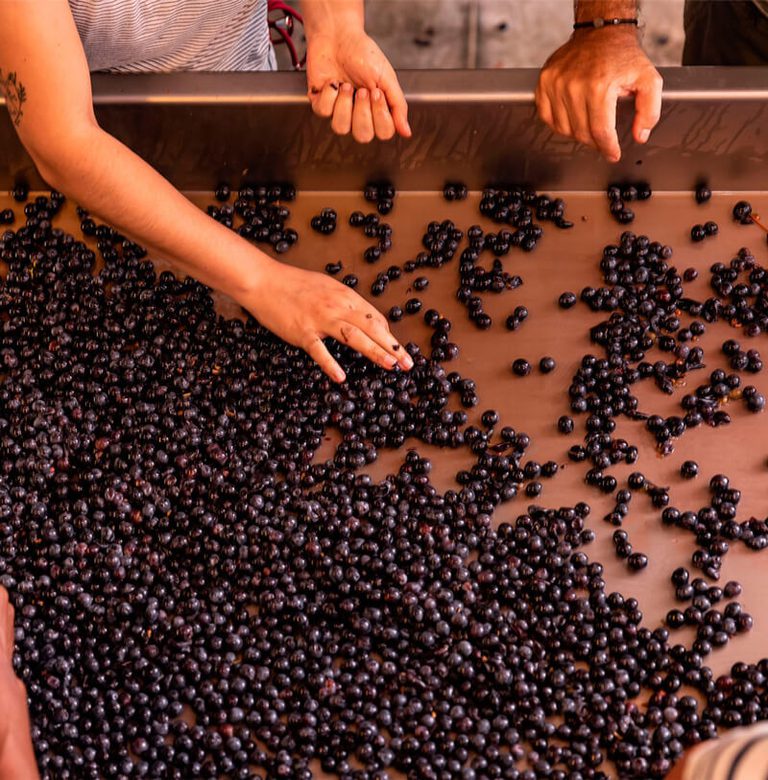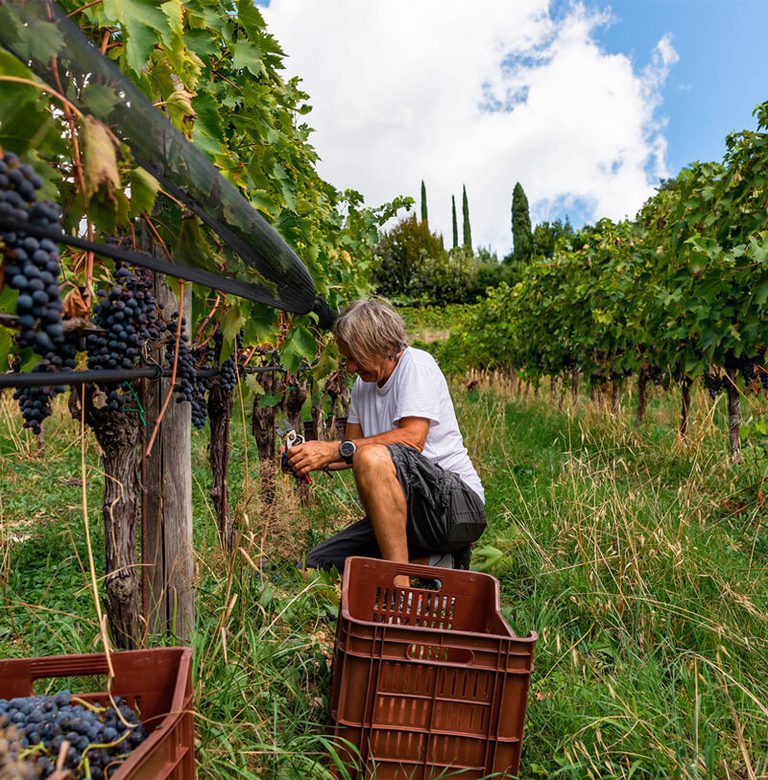
Estate vineyards at Poggio La Noce
The two vineyards on site at Poggio La Noce, with a surface area of about 3.5 hectares - 8.5 acres, run along the crest of the hillside overlooking the valley, at an elevation of 250m - 350m – 800 to 1000 feet, facing south-southwest. Our first vineyard called Vigna “I Tulipani” for the many wild tulips that grow there in the spring, was planted in 2000 and 2006 mostly to Sangiovese. Vigna “Le Civette,” our second vineyard was planted at the beginning of 2017 to Sangiovese, Canaiolo, and Colorino. The name “Le Civette” or “little owl” is in honor of a family of little owls who reside in the terrace wall right above the vineyard.
The soil at Poggio La Noce consists of calcareous marl with Albarese and Galestro strata, dating back to the Pliocene epoch in the Cenozoic era, roughly 5 million years ago. The characteristics of the soil rich in rock fragments and limestone, combined with the climatic conditions of the area, allow the grapes to reach optimum maturation both for sugars and phenols. The proximity to the river the Arno, generates a cooling breeze that sweeps through the entire valley, giving a much needed reprieve to the vines, especially during the hot summer months. The diurnal temperature changes during the weeks leading up to harvest time, allow for the optimal synthesis of tannic and polyphenolic development. All this results in wines with a good balance of sugars and alcohol, nice freshness, and roundness. Aromatic characteristics are those of the grape varietals, Sangiovese, Canaiolo, and Colorino, all three traditional Tuscan varietals.
The training system is guyot, managed with a reduced number of shoots per strain, to maintain low yields.




